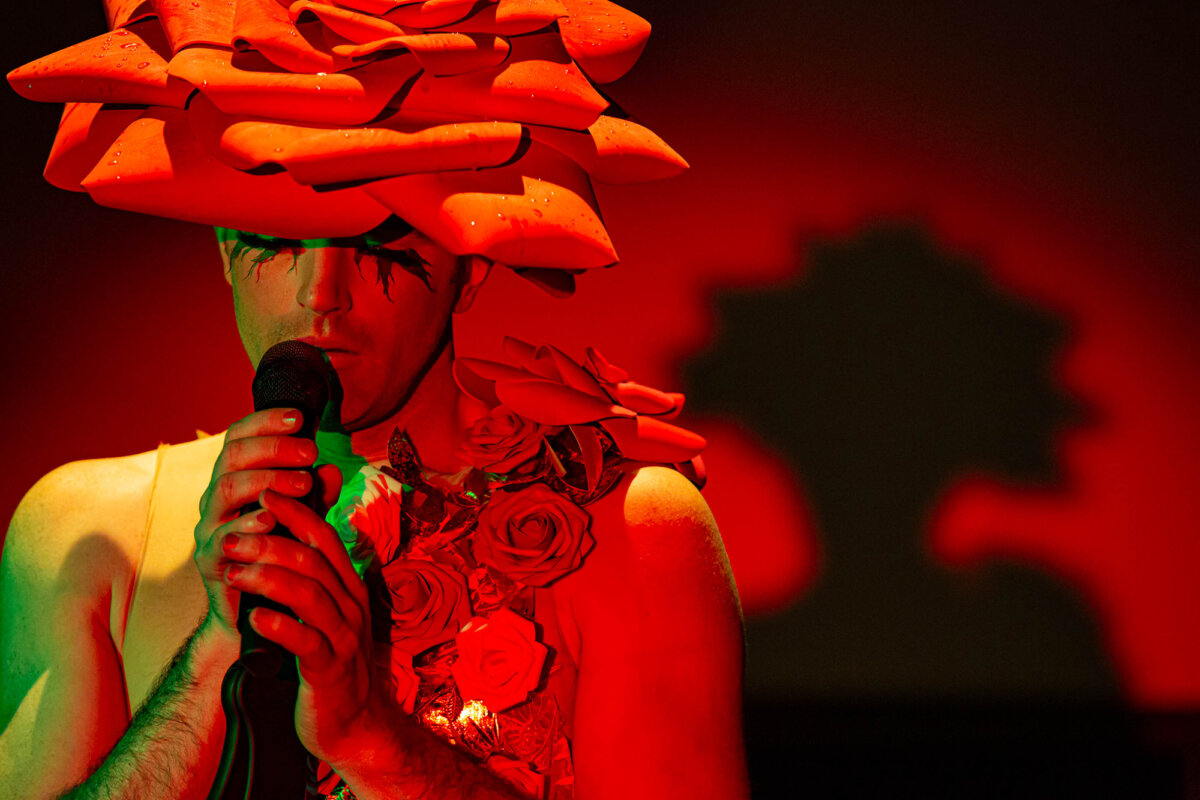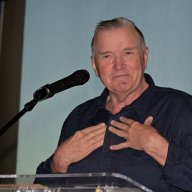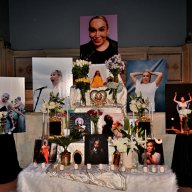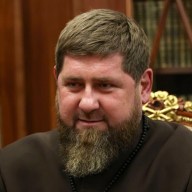Heidi Latsky’s Mother’s Day gift at Danspace
Choreographer and dancer Heidi Latsky’s “Disjointed,” created in memory of her mother, reveals a jaunty spirit while concealing a physical wound. Paul H. Taylor
Heidi Latsky’s “Disjointed,” which premiered at Danspace Project at St. Mark’s Church, is a beautiful gift of love to her deceased mother. Sandra Latsky died a little over a year ago, following decades of struggle with brain tumors and neurological disability that ultimately disjointed her thinking and speaking. Her strikingly talented daughter, a scrappy latecomer to professional training, first started out in disco and jazz dance. Eventually she wound up with Bill T. Jones and Arnie Zane, Jones’ partner in life and art who died of AIDS. Today as we watch Latsky partner the elegantly muscular and lithe Nathan Trice—who is black—and the jazzy, rambunctious Jeffrey Freeze—who is white—we cannot help but think of Bill and Arnie. Pretty soon, we’re not only enmeshed in Latsky’s history, we’re drifting through our own memories of vigils and loss.
“Disjointed” is saturated with Sandra Latsky, from the over-the-top accompaniment, selected from music she cherished, to the strutting chorus of dancers, each sporting a whimsical hat—some of which she wore—meant to reveal a jaunty spirit while concealing a physical wound.
The piece begins with lights down. We can hear a very brief, slightly muffled recording from a TV comedy bit, complete with laugh track, perhaps excerpted from a show that Latsky’s mother had loved. Through this tiny detail, Latsky begins to draw us close to her mother. It’s as if we’ve tiptoed into a darkened room where her mother has fallen asleep with the set on.
Piles of crumpled tissues resembling snowdrifts encircle the space, designed by Matthew Eggleton. Dancers are stationed across the floor, along the risers, and even up in the balcony. Clad in white and ivory, this chorus begins to move like a flock of heavy birds laboring to fly great distances. The soundtrack from “The Umbrellas of Cherbourg”—evoking the poignant lyrics, “If it takes forever, I will wait for you, for a thousand summers…”—fills the palpable, hollow spaces between one dancer and the next like a stormy wind sweeping through a stand of trees.
At first, three dancers—Latsky, Trice, and Freeze, all clad in black—go largely unnoticed amid this powerful expanse of white. Trice stands quietly, far away on a riser. Freeze, from some angles of view, is hidden until he slowly raises and lowers his arm, moving his fingers as if suffering tremors. Latsky lies motionless, caught up in a wide crimson sash. When she rises with the cloth wound around her neck and arm, she unfolds her limbs in a stunning ritual of movement set to sounds of a heart beating in the foreground and women chanting faintly in the distance.
Jazz dance, ballet, and postmodern dance have all have had an impact upon Latsky’s virtuosic, speedy, and passionate style. (The same might be said for the choreographic work of Sean Curran, another former Jones/Zane dancer, who is credited with the Trice-Latsky duet.) A physically small woman with gigantic energy, Latsky clearly can be a handful. Freeze and Trice make perfect accomplices for wrestling with the largeness of this work. Even today when postmodern dance admits more drama and feeling, presenting a dance this nakedly emotional is a gutsy move. Latsky and her dancers pull it off with the utmost of finesse.
gaycitynews.com


































